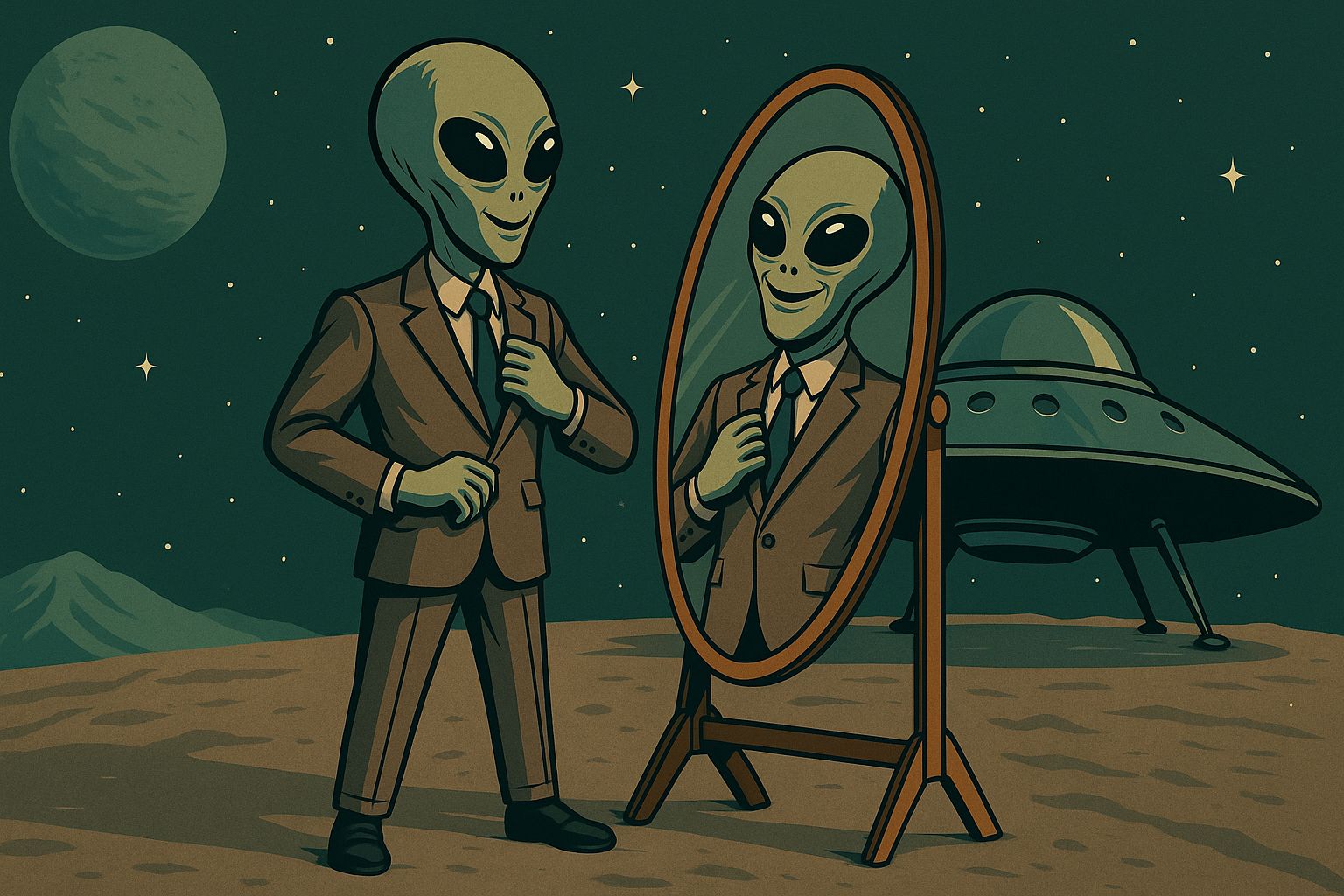Little Green Men. Little Grey Men. They are both staples of science fiction and UFO culture. When most of us imagine aliens (especially the kind that visit Earth), they almost always have those triangular heads, big eyes, and long gangly arms. But today, I’m here to tell you that ain’t happening… probably. The “probably” part is important here because the reason we’re the only human-shaped critters in the galaxy has everything to do with probability and evolution.
To think seriously about evolution—here or elsewhere in the universe—you need to get serious about the tension between convergence and contingency.
Convergence is the idea that natural selection tends to find similar solutions to similar problems. Eyes, for example, have evolved many times independently—squid eyes and human eyes are remarkably similar. Wings for flying have evolved in birds, bats, and insects. Nature, constrained by physics, often ends up reusing solutions to the same problems.
But contingency—that’s where things run off the rails. Contingency is Stephen Jay Gould’s haunting insight: replay the tape of life from the beginning, and you won’t get the same movie. It was Gould who told us that an identical version of Earth billions of years ago would not end up with even a single species identical to the ones we have today. His point was that while evolution operates under the natural laws of physics and biology, it is also deeply shaped by historical accidents. If a meteor hadn’t wiped out the dinosaurs, mammals might have stayed in the shadows. If a certain fish hadn’t developed lobe fins, we might never have stepped onto land.

So, what does that mean for human-shaped aliens?
For another human-like species to arise anywhere in the cosmos, it’s not enough to evolve intelligence. You’d need to rerun a nearly impossible string of evolutionary coincidences. You’d need a planet that evolves multicellular life, then animals with skeletons, then vertebrates, then something like tetrapods, then primate-like creatures. And at every branch, there are countless other possibilities life could explore. Take away one lucky mutation, one climate shift, one extinction event, and the chain is snapped.
Sure, eyes are useful, and yes, bilateral symmetry appears a lot. But the particular form of a human being—the head perched on a neck, two eyes facing forward, opposable thumbs, upright gait—was the draw of an evolutionary lottery ticket that happened just once on one planet: Earth. Another intelligent species, evolving on another planet, would not look—or possibly even think—like us. Their cognition might be distributed, their bodies amorphous. No arms, no legs. No Beethoven. No space telescopes.
To be clear, this is not a pessimistic view. First, it reminds us how rare, how precious our form of sentience might be. It tells us that we may be the only humans in the entire universe. Not the only life, not the only mind—but the only ones who gaze up with two eyes from a body like ours and wonder why the stars burn. But second, and most important, it tells us that nature is way more imaginative than we are. There are nearly infinite combinations and possibilities.
So if and when we do meet life that evolved elsewhere, we should expect to be surprised and probably (there’s that word again) more than a little grossed out.
PS. If you liked this please pass it along to someone and encourage them to subscribe to Everyman’s Universe

— Adam Frank 🚀


